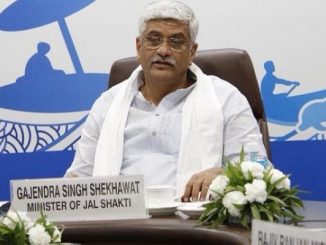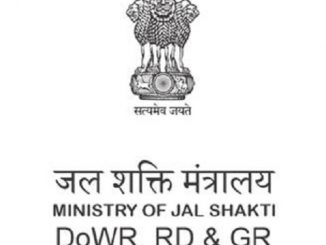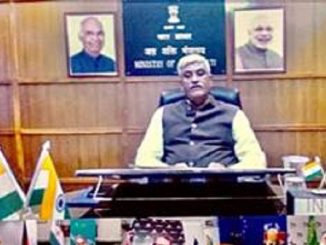
Aug 21: ‘Water cannot be increased but can only be managed’- Ramdas’s face turns stoic and tone more controlled while he delivers these wise lines. Being the deputy Sarpanch of a water stressed area of Pune district, he has earned this wisdom by seeing his clan suffer and struggle for every drop of water.
Ramdas is a resident of Bhojanewadi, a hillock habitation placed at an altitude of 927 metres of Ugalewadi village of Pune, which has about 40 households. For years he has seen his community particularly women, living a life full of hardship due to acute crisis of clean water. Undulating topography of the village has made it difficult to provide piped water supply to this habitation from the village drinking water well that is situated downhill.
Main hamlet (Gaothan) of Ugalewadi has tap water supply system where the water is pumped from dug-well as well as lifted from river and is stored in the tank from where it is distributed to every household in the main hamlet. But Bhojanewadi has to completely rely on the local ground water sources to meet the drinking water needs as being situated on the hill slope and underlain by the hard-massive basalt, the groundwater potential of the area is limited. Earlier, Bhojanewadi relied on the tank constructed in the hard-massive basalt under ‘Shivakalin tank scheme’ to cater their drinking and domestic water needs. It had limited inflows and the community faced water scarcity during the lean season. The community had to walk 500 meter uphill to fetch water.
In order to reduce the drudgery of the community, especially women, Ramdas took the lead in facilitating clean water to his hamlet. To achieve that, a 5,000 liter tank was constructed near the habitation. This helped in saving time and effort of the community in fetching water from the distance. The water to the tank is brought by siphon method from the Shivakalin tank and distributed to all the 40 households through tap connections. To improve the storage capacity of the tank, it was deepened and repaired under the UNICEF – Mumbai supported ‘Drops of Hope’ and Jal Jeevan Mission.
In order to streamline the use of water and to maintain the quality, Ramdas mobilized the residents and explained the need for adopting some protocols to cater to year-round drinking water needs of the habitation. The community also developed some protocols for judicious utilization of water. Bhojanewadi residents decided to use water by siphon system only during the monsoon, when there is enough water in the tank. In the remaining eight months, the community fetches water from the Shivkalin tank. In this way, community is keeping a check on excessive use of water. Strict monitoring is done to maintain the quality of water in the tank and to refrain people to wash clothes near the tank and also not to allow direct entry of livestock in the tank.
This has become an excellent example of decentralized water management through community participation. As the water is used judiciously, water scarcity even during summer months in Bhojanewadi has become a thing of the past.
The water crisis in Maharashtra has worsened due to years of drought and with intermittent rainfall and to compound the calamity, water table is shrinking at an alarming rate. Amidst, such a grim situation the positive stories of community participation in Bhojanewadi village are like a fresh breeze. The success of Jal Jeevan Mission – the flagship programme of the Union Government mandates the Gram Panchayats, local communities and real heroes like Ramdas, to play a key role in planning, implementation, management, operation and maintenance & mobilize the community for long-term sustainability of water supply systems in villages. This is the true empowerment of people that has been enshrined in our Constitution.
Jal Jeevan Mission aims at ensuring potable water supply in adequate quantity (@ the rate of 55 litres per person per day) and of prescribed quality to every rural household of the country on regular and long-term basis. The provision of household tap connection in rural areas will help in removing ‘drudgery’ of women, especially the girls. It will also improve the ‘ease of living’ for people living in rural areas.
Disclaimer: We donot claim that the images used as part of the news published are always owned by us. From time to time, we use images sourced as part of news or any related images or representations. Kindly take a look at our image usage policy on how we select the image that are used as part of the news.


